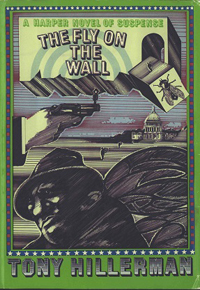
1971
To John Cotton, political reporting was a game of hounds and hares. He and the other newsmen of the capitol pressroom were the hunters. The politicians were the prey. The game was rough - played with cold, impersonal detachment. If sometimes someone's reputation was destroyed, that was the price he paid for playing.
Then a notebook left behind by the death of Merrill McDaniels, a competitor, offered Cotton a fairly easy headline. If he could find time to unravel the cryptic entries, they would - it seemed - lead him to a news story of high-level political corruption. Instead they led him into the lion's den. The rules of the game were suddenly reversed. The hunter became the hunted. And Cotton's only hope of learning who was stalking him lay in senseless columns of notebook numbers and meaningless abbreviations.
"I think Mac was after a story somebody didn't want printed. Whoever it involved killed him," Cotton told Captain Whan of the local police force. "It looks like there's three unfinished projects he was working on. The State Park concession business. Something or other involving that insurance company, and that collusion on highway contracts."
And later, to Janey Janoski, of the dark, dark eyes, he said, "I don't want the police to know where I am because I don't want anybody to know where I am. And that's because I just had the living hell scared out of me, and I'm still scared."
John Cotton had a right to be scared. But he didn't intend to stop trying to solve the puzzle because, as he said, "The public has a right to know about it" (Hillerman 1971: Promotional copy from the dust jacket).
For his second novel, the author, himself a long-time political reporter [and] Chairman of the University of New Mexico's Department of Journalism, builds a chilling tale of suspense against a background with which he is intimately familiar-the corridors of political power in a state capitol. Hillerman's first novel, The Blessing Way, won widespread critical acclaim for its blending of suspense with an evocation of the Navajo Indian way of life. In this second novel, the blend is suspense with a newsman's world, in which the model for behavior is "the fly on the wall," and a political chess game in which murder becomes a play (Hillerman 1971: Promotional copy from the dust jacket).
